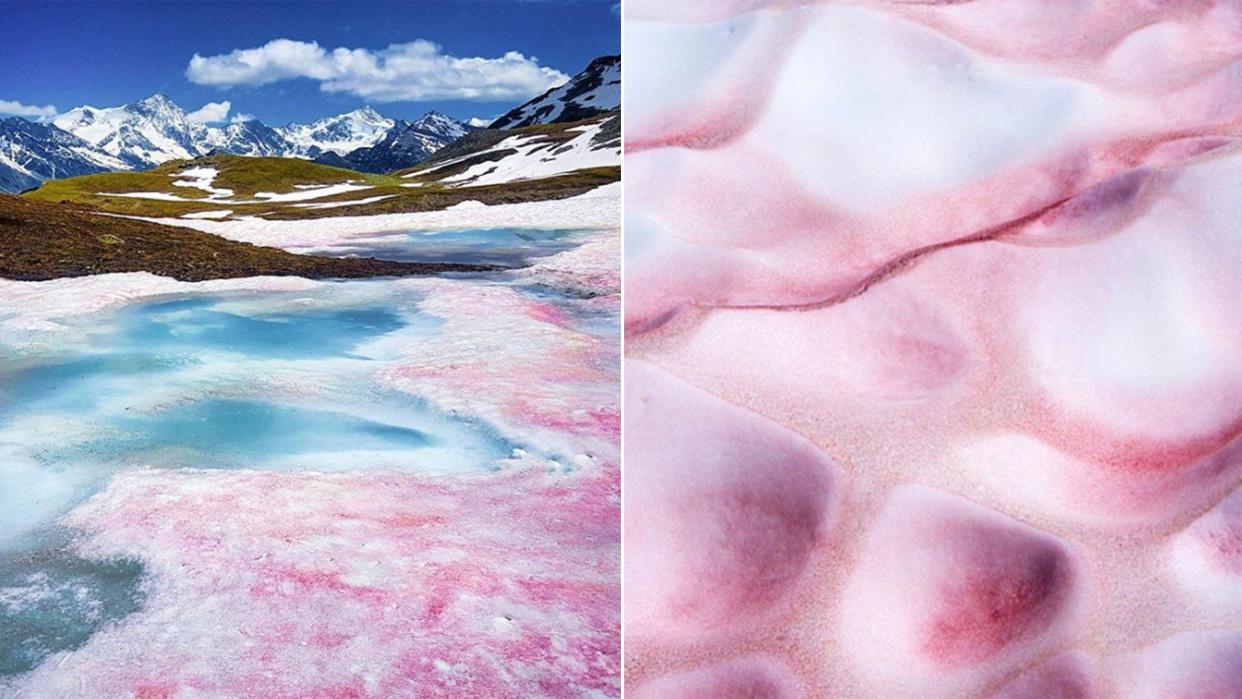What Is Pink 'Watermelon' Snow?

You already know not to eat the yellow snow, but you'll also want to stay away from pink snow, or watermelon snow, as it's called. Yes, pink "watermelon" snow is a thing - but don't let the delicious-sounding name tempt you (even if people claim it actually smells faintly of the fruit, as both Scientific American and Science Alert report).
No, it's not a naturally occurring snow cone. Mother Nature is not trying out the "millennial pink" trend, and the sometimes blood-red melted liquid is not leftover from a crime scene. So what exactly is watermelon snow?
#bescsdebosson #valais #watermelonsnow #pink #pinksnow #mtblife #switzerland
A post shared by Dan (@trailstaff) on Jul 13, 2016 at 2:44am PDT
According to the New York Times, watermelon snow occurs when the sun heats up and snow starts to melt. The freezing temperature and presence of liquid is apparently the ideal environment for a certain type of algae, Chlamydomonas nivalis, to bloom, turning the snow the saturated shade which attracts more sun and accelerates the melting process.
A post shared by Ardefact (@ardefact) on Jan 16, 2017 at 7:15pm PST
A post shared by Destiny Drop Натуральные Духи (@destiny_drop) on Jan 11, 2018 at 2:33am PST
Pink snow, also known as snow algae, red snow, or even the ominous-sounding blood snow, has been spotted all over the world (including the Rockies, the Himalayas, the Arctic, and Antarctica), most recently in melted form at Montana's Glacier National Park.

